Better Bow and Arrow Cast: Video
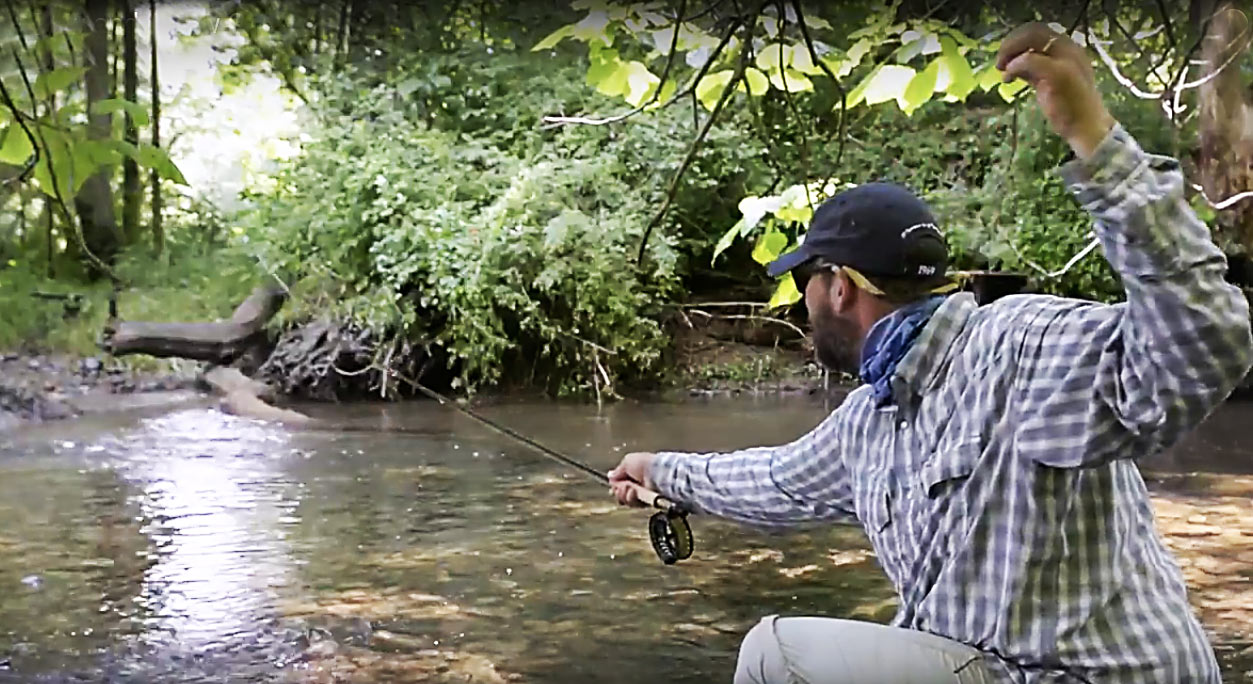
By Louis Cahill
Here’s a trick you may not know for making longer Bow-and-Arrow casts.
If you love fishing small streams, then you probably know how to make a Bow-and-Arrow cast. It’s not rocket science. But, what if I told you I could show you how to get an extra 6-9 feet with that simple cast?
I couldn’t count the number of brook trout I’ve caught this way ing the mountains of North Georgia and North Carolina. If you don’t know how to make the Bow-and-Arrow cast, or if you’re interested in reaching more water,
check out this video.
Read More »So You Want To Be An Alaska Guide?
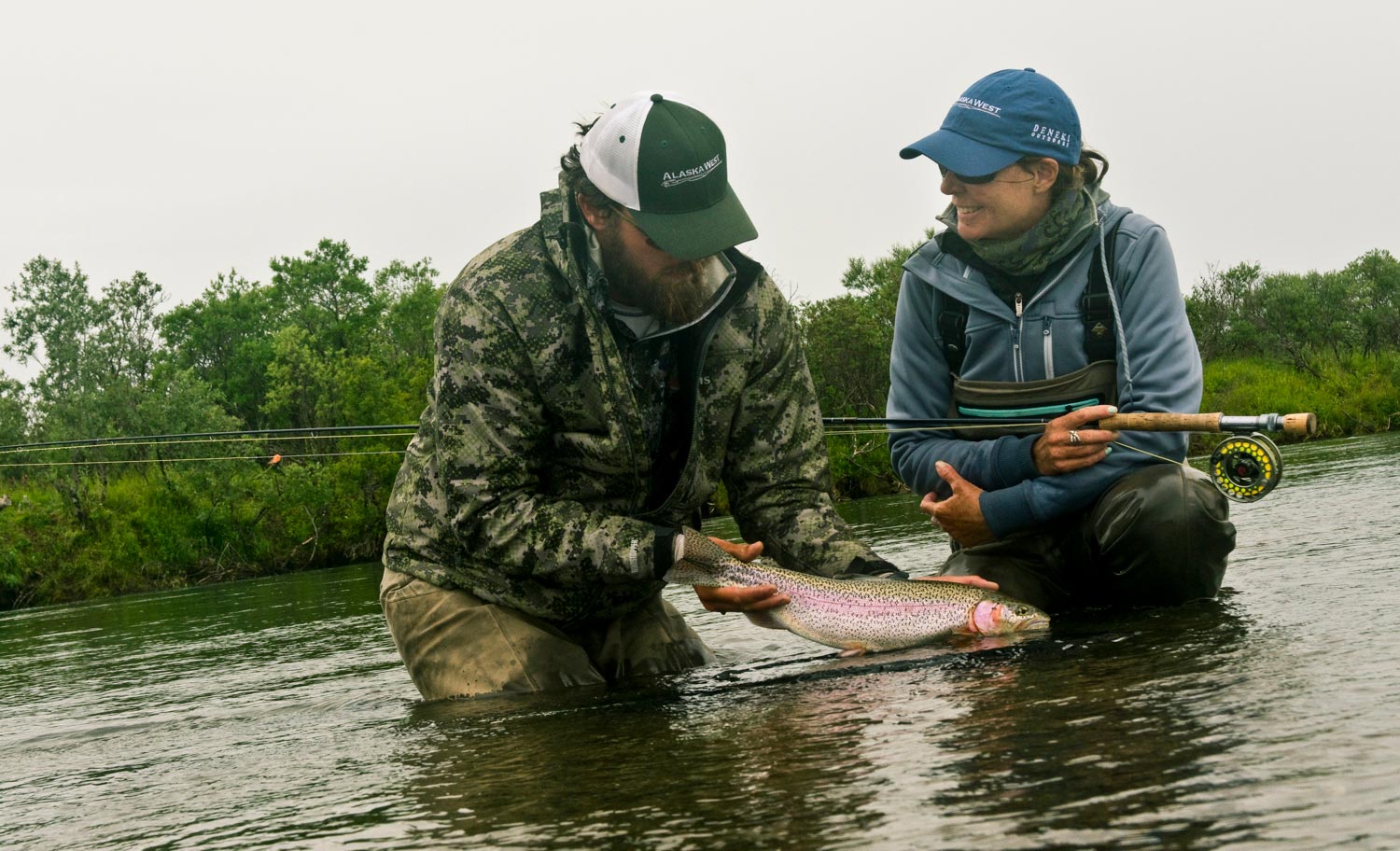
By Whitney Gould
The plane, which brought me to Western Alaska is gone.
I’m standing on a remote, empty tarmac. The sky is a herring-gull gray, the air crisp and clean. I am surrounded by tundra. The only visible object is a square box painted white, the airport. People come, pick up passengers and supplies, and disappear as suddenly as they arrived. This is my dream job. I’m an Alaskan guide and I am losing any shred of confidence.
Weeks prior, I had emailed Ed the head guide, asking him what skills I would need to get through the season.
“It’s long hours day after day,” he wrote. “It can become grueling, I won’t lie about that, but it also offers many opportunities for the ‘best of times’… The main thing we look for up there is dependability, a stable personality, and the ability to get along with others while working in a confined social environment for a long period of time.”
Standing there, I thought, maybe I have two of these qualities, but if no one comes to get me, I now have paper to start a fire. Eventually I am picked up.
Nothing in Alaska is wasted. Trips to the airport or town are condensed, combined with supply runs and trips, to the post office and dump. This day is no different. Tyler, the camp hand, drives us eight miles up river to deliver me and supplies to camp. My arrival is no different than that of the guide I am replacing, or the guides who will replace me in five years.
Rick, the camp manager, greets me. After introducing himself, he gives me a tour and tells me to be ready after lunch to gravel the walkways.
Graveling is no easy task. It’s tedious and exhausting. Early season brings high water, so the trick is to find an exposed gravel bar. You take the boat to a bar
Read More »Three-dudes walk into a parking lot
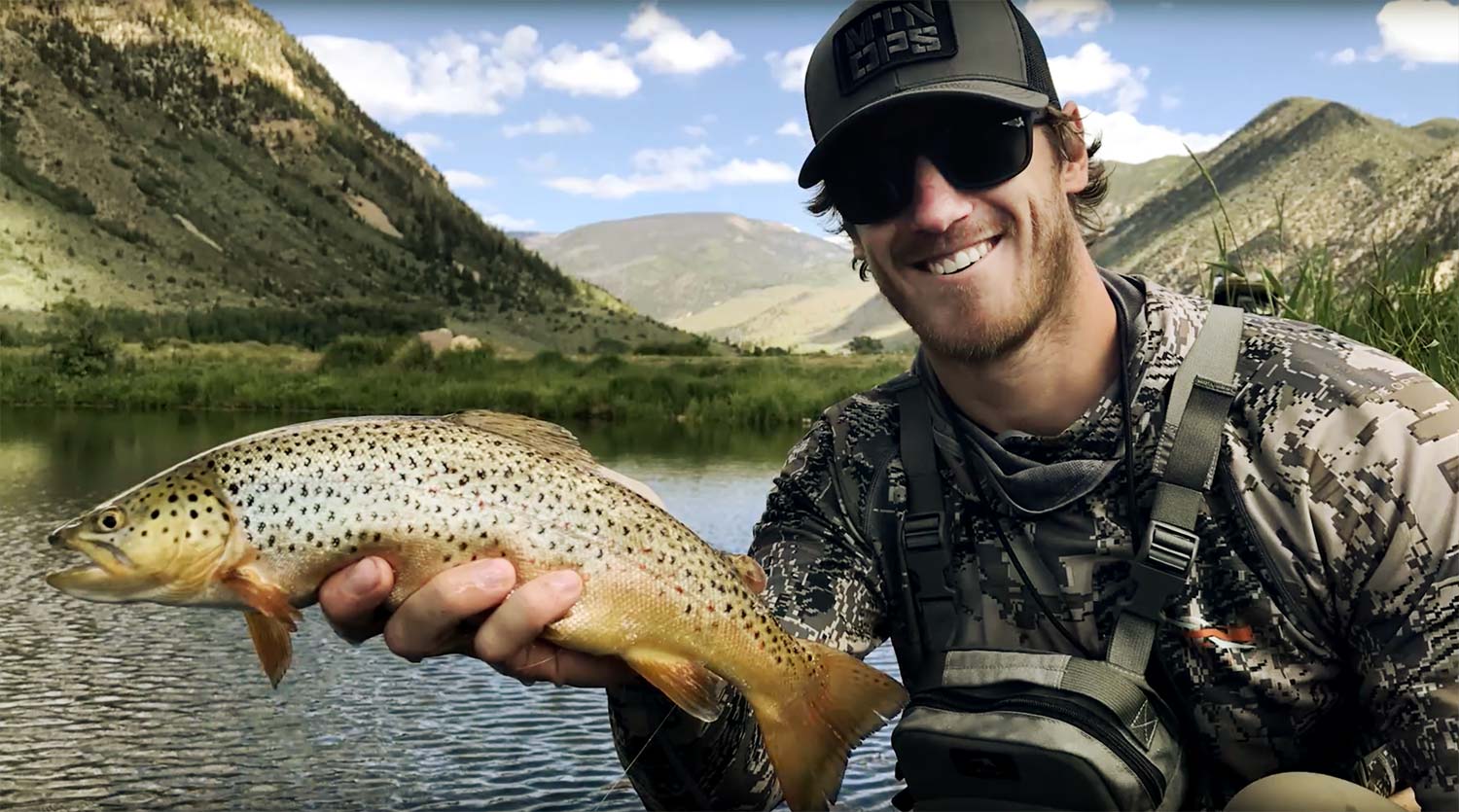
By: Alice Tesar
Louis Cahill, Editor and Chief Fly Fisher of Gink and Gasoline, recently published an article Tom Rosenbauer’s 8 Tips To Becoming a Better Fly Fisher and tip #5 is an invaluable lesson: “Don’t be an asshole on the water.” You see, I’ve met plenty of assholes on the water, and while I typically chose to remain silent, the few times I have committed a minor retaliation against said assholes, it has ruined my day. Heading back to camp or the car with the taste of yesterday’s beer and hate on my tongue is a bummer. No matter the fish I caught in that high hole, encountering a jerk and being rude back to them makes fishing less fun. After all, most of us aren’t catching dinner we’re just on the water to create space for joy in our lives.
I was riding the YouTube train recently and came across the most genuine fly-fishing video I’ve seen in a long time. No long list of sponsors or fruity drone footage, it was a low budget, home-edit. Three young guys, maybe in their early 30s, who met up at “Wally World” ( aka Wal-Mart), to drive a few hours to two undisclosed tiny ponds rumored to be filled with trout. Based on their clothing, rigs, and chatter they were experienced anglers with heads on their shoulders (or at least on their shoulders enough to still want to fish with tiny flies and uber flexy rods). They used their phone cameras and maybe a Go Pro or two to document that afternoon on the water. They proceeded to catch a handful of maybe 12- to 16-inch bows and browns both from the banks and from a small pack-raft. Regardless of the massive tarpon or belly bulging PNW zombies they’d likely caught on other days this year; these three bros were having the time of their lives with each dinky little catch. Maybe it was the truth behind the rumor that led them to these lakes or purely catching all day that made them so giddy, but their hoots and hollers, their laughter, and ridiculous retelling of their catches have stuck with me.
Too often I see other anglers within the dark magic of angling, “going to catch a big one” and acting like complete assholes to other anglers along the way.
Read More »Sunday Classic / The Magic Stonefly
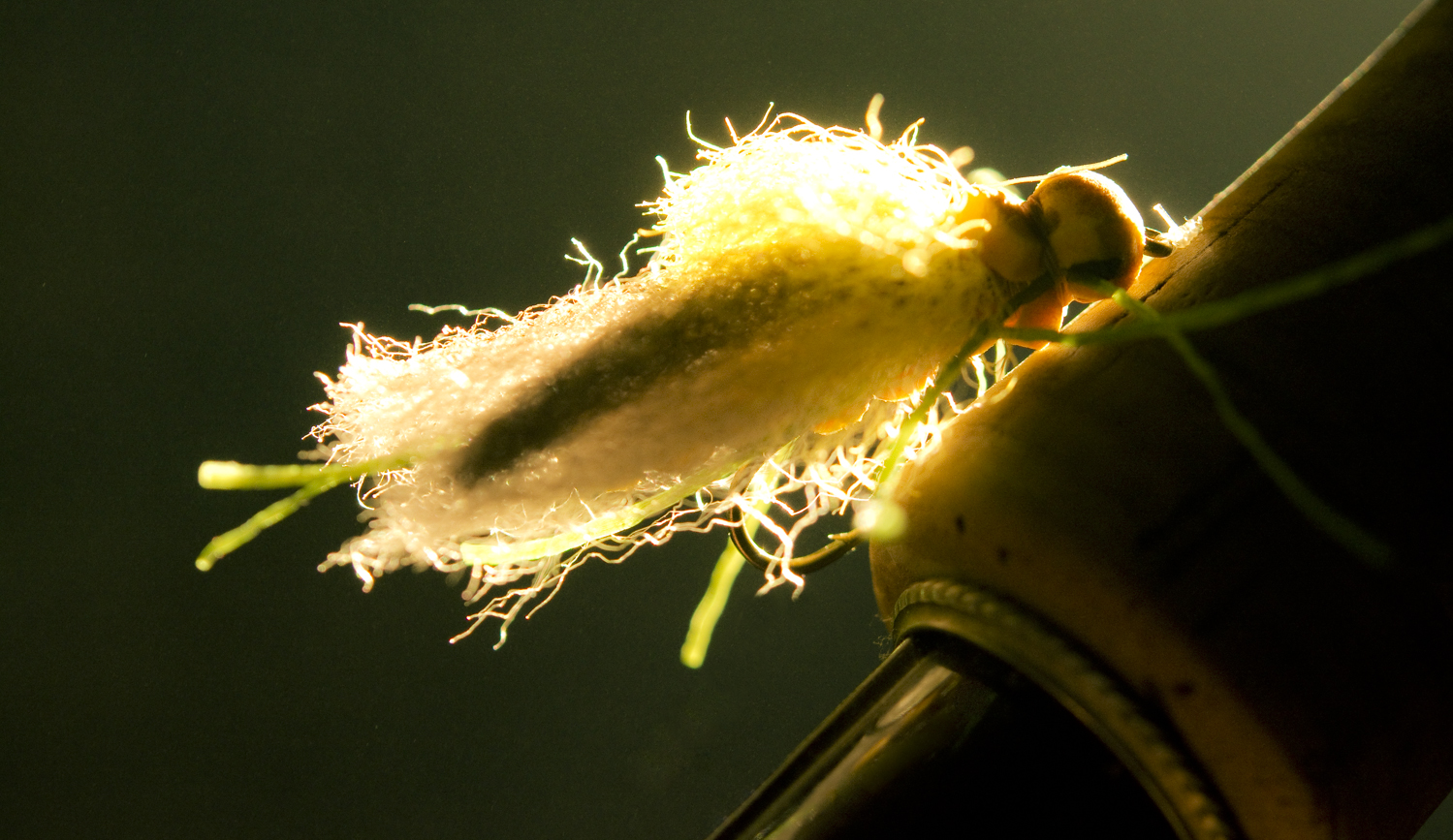
ON OF THE BEST LESSONS I HAVE LEARNED FROM FISHING WITH KENT IS THIS. IF THERE IS A SECRET TO ANGLING SUCCESS, IT’S CONFIDENCE.
A few years back I was on a photo shoot in Wyoming when the client wanted to stage a shot of an angler looking through a fly box. The box we had on hand was my own, but my fly selection was greatly depleted, as it almost always is by mid summer when I’m too busy shooting to tie. My good friend Rob Parkins was helping me out on the shoot and offered to fill out my box with some of his flies. After the shoot when I offered the box back so he could reclaim his flies, he told me to keep them.
I was stoked! Rob is one of the best fly tiers I know and I was stoked to have half a box of his flies. I was planning a couple of days of fishing at the end of the job and I knew these flies would insure that it was productive. I was right.
Among the flies were some very cool stonefly patterns. Several I had not seen before. One in particular caught my eye. A golden stone dry fly with sexy legs and a cool wing made up of layers of flash and different colored yarn. I held it up to the light and the wing had a lifelike glow that I knew would drive fish crazy. I remember thinking how clever Rob had been to think of it.
I wrecked fish with that fly while I was in Wyoming. When I got home I couldn’t wait to give it a try. I wasn’t surprised to find that it was just as effective in the east as it was in the west. It was just one of those fishy flies that works anywhere. When I got to the river I would tie it on and I knew it would produce.
I fished that fly with confidence because I trusted the guy who tied it. I knew that any fly Rob had tied was going to be a guaranteed producer and all I had to do was put in on the seam and hang on. I caught a lot of fish on that fly everywhere I fished it. Eventually I stashed it away. I was afraid I’d lose it and not be able to tie another.
I called Rob up and told him about the success I was having with the fly and asked him if he would share the recipe with me so I could tie up some more. He was happy to help but when I described the fly he wasn’t sure which fly I was talking about.
“Take a picture with your phone and send it to me,” he told me. So I did. This is the response I got.
Read More »Saturday Shoutout / Anchored with Ted Juracsik
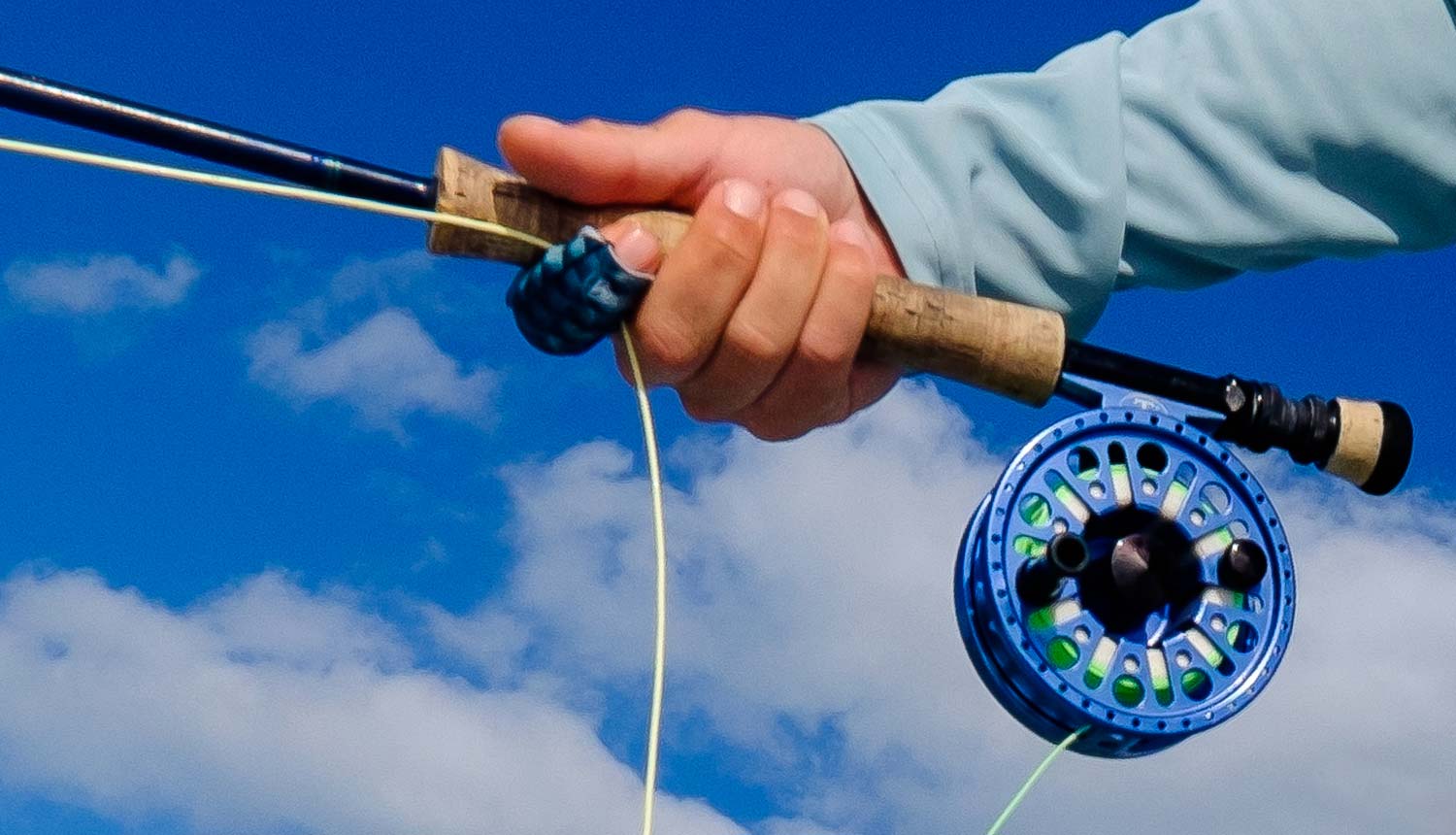
By Justin Pickett
I’m a regular listener of the Anchored podcast, which is produced and hosted by April Vokey.
Her guests include some of the most influential individuals across the gamut of outdoor industries, and covers topics such as conservation, ethics, and travel, along with behind the scenes insight as to what drew these outdoorsmen and women to seek a career in the outdoors, whether it be hunting or fishing. April does an amazing job captivating her listeners by not only having some of the most renowned personalities on her podcast, but by also asking engaging questions that draws the listening in even further. By the end of each podcast, you feel like you know the person she was interviewing, and I often find myself learning quite a few new things along the way.
Yesterday, I expected nothing less than April’s usual intriguing dialogue when catching up on a few of episodes that I had missed during previous seasons of Anchored. One of the episodes was with Ted Juracsik, founder of Tibor Reels. Ted is certainly known for producing some of the most beautiful and brawny fly reels in the industry. Made 100% in the USA, they are amazing tools for the serious fly angler. What you probably don’t know about Ted Juracsik is even more amazing. His compelling life story, and how he landed in the U.S., had me hooked from beginning-to-end, and is probably my favorite episode from any podcast that I’ve listened to thus far. Full of emotion, pride, patriotism and inspiration, this episode is certainly one that you will be glad you took the time to enjoy!
Give it a listen!
Read More »How To Unsnag A Fly: Video
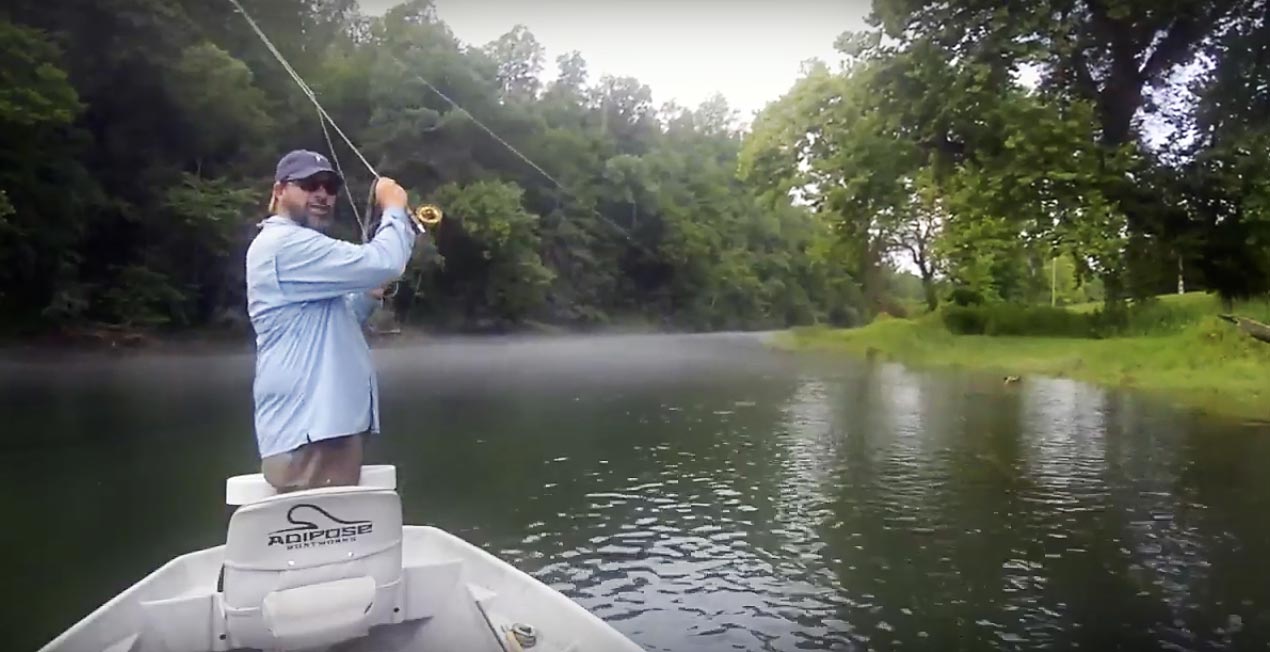
Every fly fisher gets snagged up once in a while.
It’s part of the game. If you aren’t fishing to structure, you aren’t fishing to fish. This is never more true than when streamer fishing. You’re constantly snagging logs and if you row over to get your fly, you’re spoiling a lot of good fishing spots where you could have hooked that big boy.
Most times it’s pretty easy to recover a stuck fly without ruining the spot. It’s a skill that challenges many new anglers. All you have to do is keep your wits about you and fish smart.
WATCH THIS VIDEO AND LEARN HOW TO CLEAR A SNAGGED FLY.
Read More »Flats Boat Etiquette, Being A Good Fishing Partner

Here are a few suggestions to help you, and your fishing partner, have a better day on the boat.
Flats fishing from a boat is a team sport. Whether you’re out fishing with friends, out with a guide or on a trip to a fishing lodge, you’re never out on the boat by yourself. Usually you are sharing your fishing time with another angler. It may be a friend, a spouse or a complete stranger but regardless of who you’re fishing with, one thing is the same. How you behave on the boat affects their fishing experience.
I’ve seem some pretty thoughtless things done on flats skiffs. Usually out of ignorance and often ending in embarrassment. Neither angler, or the guide for that matter, needs that. With that in mind, here are a few simple rules to help you be a good boat buddy.
BE QUIET!
Rule number one. First, last and always, be quiet. Saltwater fish are easily spooked and the noise of cooler lids, camera cases and beer bottles banging against the hull travel for great distances in the water. Don’t be a busy bee. Your buddy’s fishing time is not your chance to get a few things done around the boat. Be still. Rocking the boat moves water and fish can hear it. Keep your shoes off. Sock feet are quiet feet. Be obsessively quiet. You never know when you’re about to see the fish of a lifetime.
DON’T BE A BOW HOG
Share the fishing time fairly. It’s not fair to stay on the bow all day, even if you’re not seeing fish. The worst is when two anglers of very different skill levels get paired together. All too often the better angler spends the day watching his partner blow shot after shot. When it’s his turn to fish, he gets up, catches his fish in five minutes and is back in the chair for an hour.
There are some “rules” for lack of a better term. They vary a little and guys who fish together often sometimes have their own rules but they are all something like this.
Read More »Alice’s Angle, Never Have I Ever: Bristol Bay
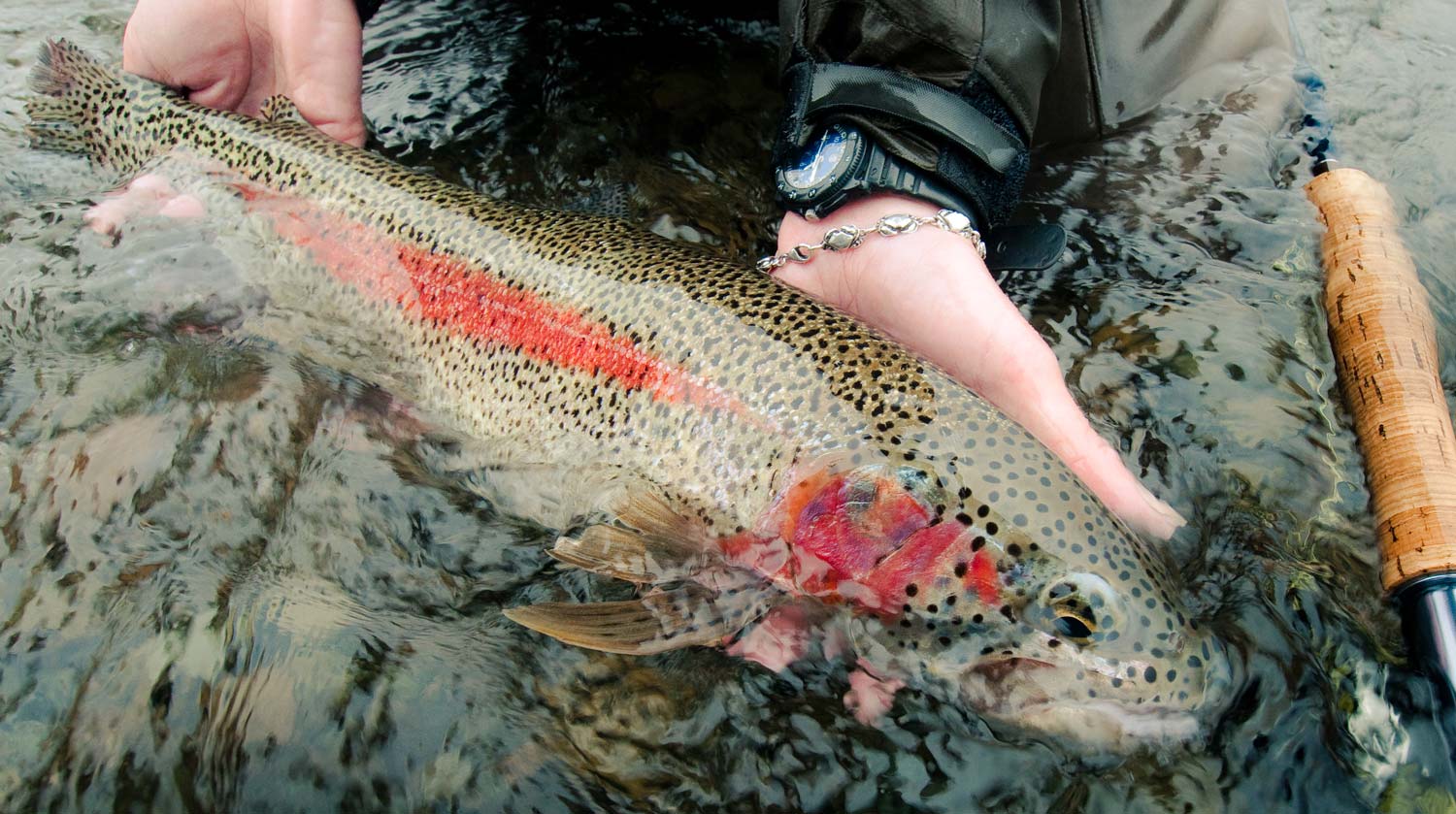
By: Alice Tesar
I’ve never fished for sockeye salmon. I’ve never been to Alaska.
When my husband and I decided to add a kid to our crew we knew adventures like this might be put on hold on. We named our son Brooks for many reasons, but we’ve also joked it’s because he’d help us get to these new places for adventure, like the Brooks Range of Alaska. Other places have enticed us too, mostly saltwater fisheries (because that is where our buddies go) but we all know Alaska offers pristine open space, few people, and loads of wildlife. Today, our Alaska trip seems to be getting further and further away. Not because of work, or our kid, or money but because of the greed of a few. So, few, in fact, they go by the name Pebble Partnership. The truth, however, is their impact will be much larger than a pebble.
The proposed open-pit mine is at the headwaters of the Kvichak and Nushagak Rivers which run into the Bristol Bay. The Pebble Mine would be one of the largest mines in the world. Aside from the size of the mine, the disruption of geology in the area would cause massive destruction to the world’s most productive wild salmon run. Why is the salmon run so productive? Easy, because the surrounding habitat has not been manipulated by the dirty hands of industry. Katmai and Lake Clark National Parks are some of the nation’s largest parks, boasting 8.3 million acres of pristine wilderness. On top of saving this crucial resource, the open pit mine and all its legs run the risk of harming the region’s social, cultural, and economic welfare. With 30 plus Alaskan Native Tribes in the region who depend on healthy salmon runs and the current Bristol Bay fishery, worth $1.5 billion and employing 14,000 people, we can’t ignore the hardship many Americans will face with the Pebble Mine operation.
I’ve been told the work-force in the world is changing, with automation, many of our jobs will become obsolete. The jobs we will hold in the next 50 years would be completely unrecognizable to us today. Something tells me this doesn’t have to be as true for the jobs
Read More »Fly Fishing Gear For Small Streams
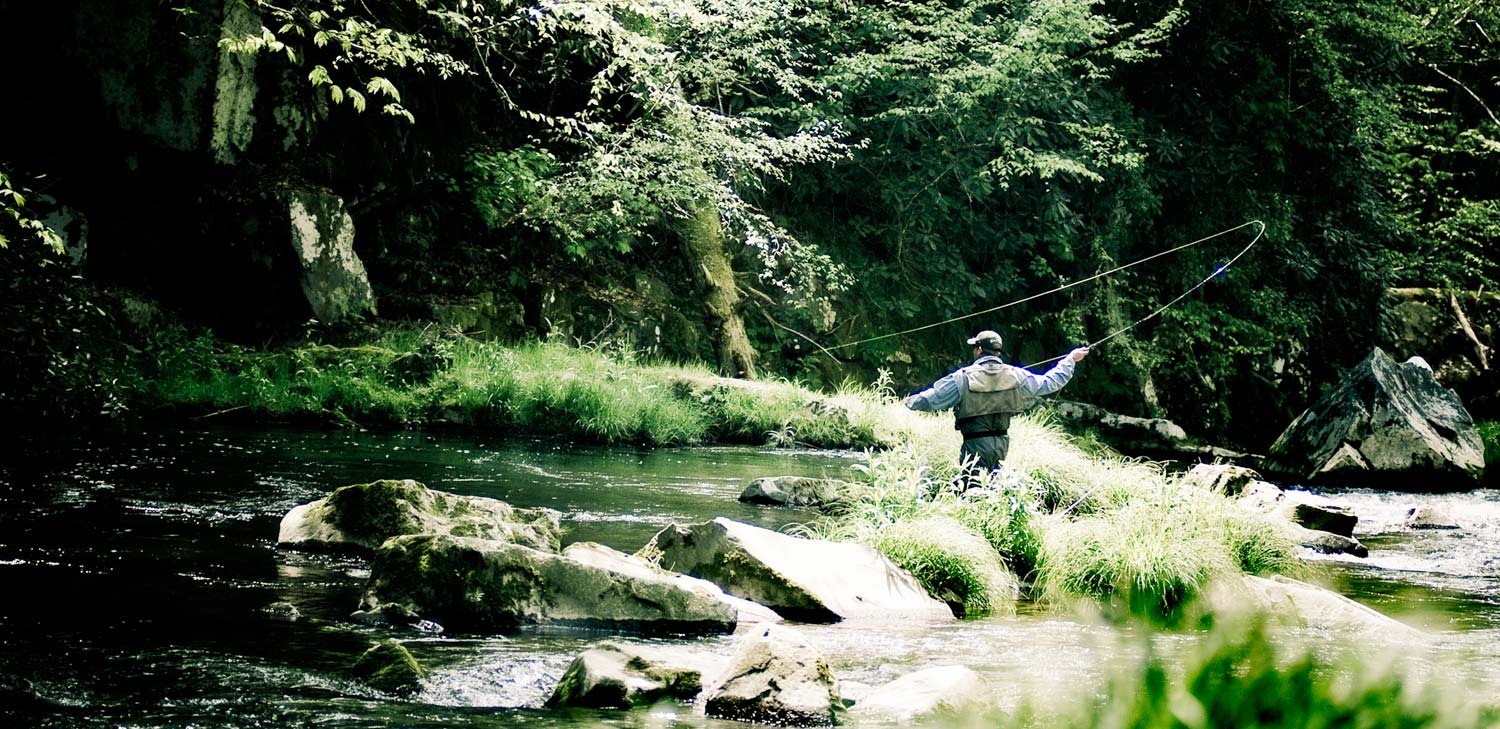
By Jason Tucker
Fly gear is fly gear- until you find yourself on a tiny creek full of brook trout or cutthroat rising to tricos and all you have is a nine-foot five-weight and 4x tippet.
What works on the big rivers may not be so well suited to small-stream fishing. They make zero weight rods for a reason. And the rig you choose can make or break your day on a small stream. You can use that five-weight, but you may not be able to fish so well in tight quarters.
Rods. I have indeed cast a zero weight Orvis rod, but that is not typically what you want on a small stream. You want something in between. You want something short, light and strong. I’ll leave it up to you to find the perfect combination but take a hard look at fiberglass. Rods can take a beating in tight quarters. Glass is almost impossible to break, it is very forgiving on light tippet, and it roll casts like a dream, a must on small streams. Blanks in the five to seven-foot range work nicely. One of my go-to small stream rods is a seven-foot, six-inch Eagle Claw 5/6 weight. I haven’t found a lighter one yet, but even small fish put a nice bend in it. It takes a beating riding around my vehicle without a case, and If I break it, it’s thirty bucks to replace, yet it casts very nicely. There are, of course, many fine and more expensive glass rods out there, and they are often works of art and a dream to cast, so knock yourself out.
Graphite is still an option, but look for one of the softer actions and shorter blanks that are coming out these days. For many small streams a rod in the six to seven foot range is ideal. As far as line weight, three and four weight rods work nicely; five weight will often feel heavy and spook fish, and a two-weight rod may not have the power to keep bigger fish out of the brush. Use your judgement. It’s just fishing.
Reels. Don’t overthink them, and definitely don’t overspend. You typically won’t need your drag, and if you’re smart you’ll land most of your fish by stripping in line rather than reeling your line in. Any serviceable click and pawl model will get it done. Dig up Granddads old Pflueger and you’re all set. Most of the major manufacturers offer a basic trout reel for a modest price.
Lines. Any good weight-forward floating line that matches your rod will do. A double-taper that offers a gentler presentation is nice too. The less disturbance you make on the water, the better, so go as light as you can while still being able to stop fish. Just know that that five-weight line often hits small-stream water with a thud that spooks fish in such tight quarters.
I have taken to using a light and short sink-tip line for streamer fishing small streams. It can be tricky to use, but it does help to get your streamer down to the fish. You don’t have to use a sink-tip on most small streams especially if you are using weighted streamers, and the heavier splash of a landing sink tip can be detrimental to the fishing. In some situations, and with weightless streamers, a sink-tip can get the fly down those few inches that make a difference. It’s a matter of knowing the stream and using your best judgement. Carrying a spare spool or reel with a sink-tip is a good idea so that you’re not married to it.
Leader and Tippet. I use 9 foot, 5X tapered leaders, or 4X and tie on 5X tippet. You won’t want a long leader on most small streams. For fishing skunks or muddler minnows I’ll use a
Read More »Sunday Classic / Swinging Streamers for Trout in Deep Water
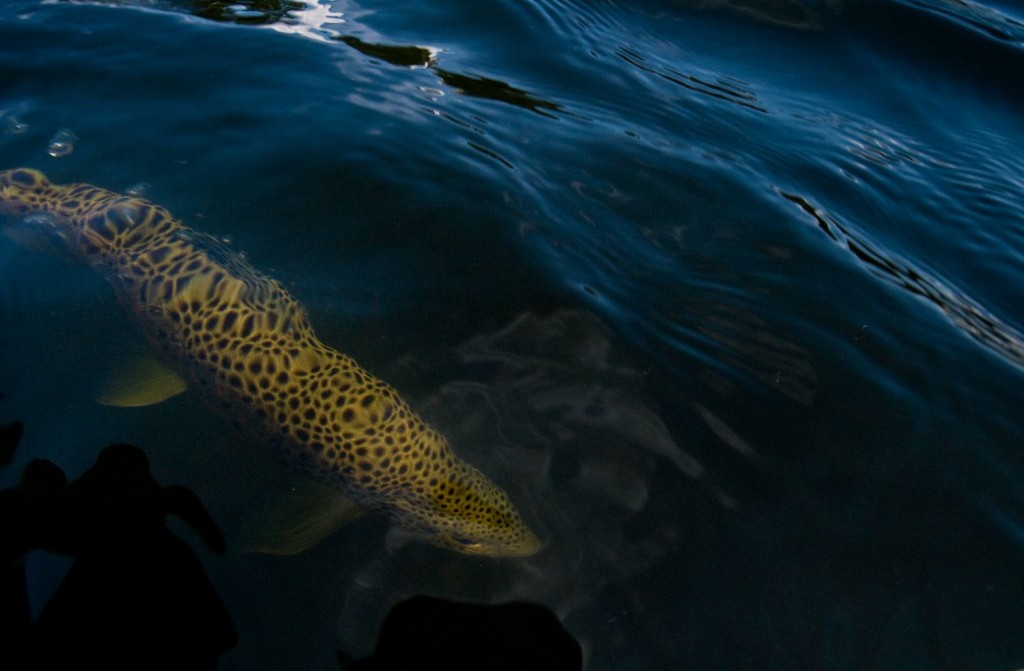
Most streamer fisherman out there would agree that pounding the river banks with a streamer will catch trout just about anywhere.
If you’re willing to put in the time and hard work, eventually you’ll be rewarded with a big fish. During high water flows on rivers where habitat is insufficient out in the main river, many trout will relocate to the banks where they can use the irregular banks and it’s abundant cover to shelter themselves out of the excessive current. There next move, once they’ve gotten to the banks, is to find prime ambush spots where they can easily pick off prey moving by. This is why casting to the bank and ripping streamers back to the boat is so effective. You’re repeatedly putting your streamer right in the kitchen where good numbers of fish will be holding and regularly feeding.
The majority of the time, this scenario works great, but what do you do when you find yourself in areas where the water is super deep and the fish are sitting on the bottom? These places make it extremely difficult for anglers to keep their streamers down deep in the strike zone while using the pounding the bank technique. Even with a full sinking fly line the cards are stacked against you. Don’t get me wrong, it can still work at times, especially if you cast upstream of your target water, throw couple of big mends, and give your streamer time to sink before you begin your retrieve. Unfortunately, in many situations, you won’t always have the time or the room to pull this technique off, and that should have you searching for an alternative fishing method that’s better suited for fishing your streamers in these deep water locations.
Read More »